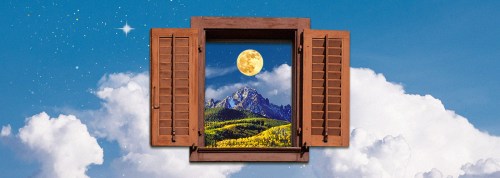This smart headband takes the ‘am I doing it right?’ dilemma out of your meditation practice
"Am I doing this right?" is the question on every meditator's mind. Muse 2, the feedback all-star of meditation technology accessories, provides a solve.

Whether you’re brand-new to the cushion or consider yourself a meditation pro, one thought has likely dominated at some point along your quest for a more peaceful mind: Am I even doing this right? Because unlike with your workouts, for which there are trainers and instructors available to evaluate your form on the spot, meditation technique can feel like a tricky skill to master. Well now, with Muse 2 ($249)—the second edition of the buzzy meditation headband—your at-home mindfulness practice is getting that same instant-feedback treatment you enjoy in boutique fitness classes.
The first version of Muse ($199), which launched in 2014, features a singular “Mind” exercise, which uses EEG (a measurement of the ionic currents within the neurons of the brain) technology to reflect a user’s state of mind with emulative weather sounds. For instance, when your thoughts veer from your breath toward what to whip up for dinner, Muse’s rainforest soundscape sends winds whipping through the trees. And, in turn, when you manage to focus on the breath, the weather becomes calm. If you’re extra Zen, a bird might even tweet in a nearby tree (ahhh).
Today, Muse 2 introduces three additional offerings in conjunction with the “Mind” feature: “Heart,” “Breath,” and “Body.” “We learned a lot with our first product,” says Nadia Kumentas, the company’s director of brand marketing. “There are a lot of other facets that play into a holistic meditation practice. And several of those are obviously posture (finding stillness and physical relaxation), being able to follow and ride your breath (thorough breath exercises and breath work), and also tuning into the rhythm of your heart and your heartbeat.”
In the Body exercise, wind chimes sound whenever you fidget. (I danced a little on my meditation cushion to test out the sensors, and trust me, they’re legit.)
Kumentas deems Muse’s trio of fresh offerings “experience centers,” and when I try them for myself, I understand why. Each one takes a physical system that’s already at work in your body and transforms it into a feedback loop for your meditation sesh. Take the Heart, for example, which mimics your beats per minute, or BPM (which constantly changes depending on your moods and circumstances) with a drumbeat. In the Breath meditation, you’re rewarded with musical tones whenever the headband senses that you’re following “inhale” and “exhale” prompts consistently. And in the Body exercise, wind chimes sound whenever you fidget. (I danced a little on my meditation cushion to test out the sensors, and trust me, they’re legit.)
Muse’s concept gives “awareness”—a term thrown around quite a lot in yogic and meditation circles—an audible reality: The monsoon or drumbeats in your eardrums basically force you to pay attention to whatever’s brewing in your mind. “There are essential skills to establishing a meditation practice and getting into the habit of doing it regularly that benefit from feedback,” Graeme Moffat, PhD, chief scientist at Muse, says adding that the four Muse 2 offerings cover all these basics. “Some things are harder to learn than others unless you have your performance reflected back to you. Feedback in general is one of the most powerful teaching tools that there is,” he adds.
IMO, the single coolest thing about Muse is this: The device really just offers a clearer, more comprehensive view of a user’s beyond-skin-deep goings-on. Because, really, we’re all getting feedback from ourselves constantly. Actually listening is the hard part.
Hand mudras can level up your meditation practice, too. And if you keep falling asleep mid-breath cycle, here are eight ways to stop.
Sign Up for Our Daily Newsletter
Get all the latest in wellness, trends, food, fitness, beauty, and more delivered right to your inbox.
Got it, you've been added to our email list.










